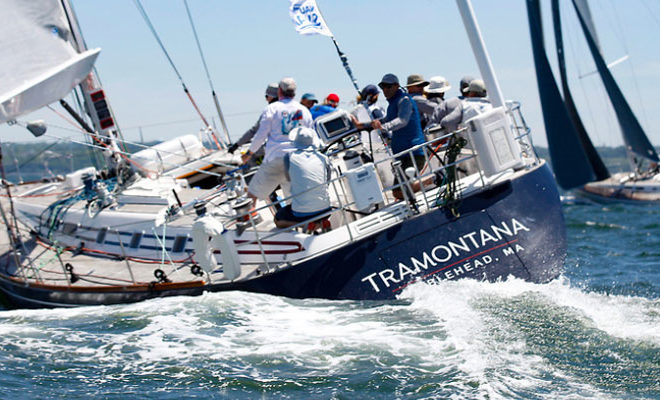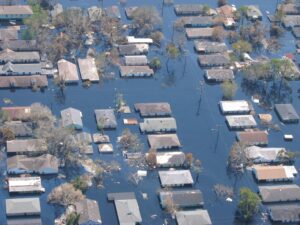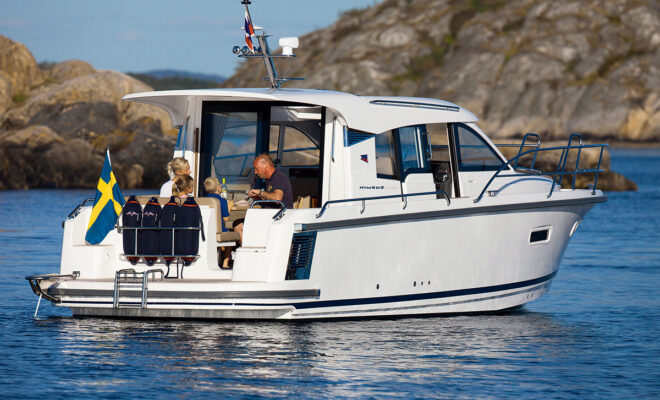A town float landing, with a reported 2 feet alongside, is at the head of Harbor Cove. Gloucester has many small-craft facilities along the waterfront. Sewage pump-out, marine railways up to 50 feet and several 20-ton mobile hoists are available.
Just inside the mouth of the Annisquam River, Cape Ann’s Marina Resort offers full amenities for transient boaters, including fuel, pump-out services, a dockside restaurant, and even an indoor pool. In addition, an onsite service crew is available to assist with any projects or repairs that visiting boaters may need.
Party fishing boats operate from several points in the harbor during the summer, and charter boats, rowboats, and outboards can be rented.
Eastern Point Yacht Club is on the north side of the entrance to the cove at the inner end of Gloucester Breakwater. There is a depth of 8 feet at its float landing, to which water is piped. The club maintains guest moorings and restrooms, showers, and dining room, and provides certain services for visiting members of yacht clubs.
Marine and most other supplies are obtainable in town. The harbormaster can be reached on Channel 16/72 or by calling 978-282-3012. A speed limit of 5 miles per hour is enforced in the Inner Harbor.
Anchorages:
The best anchorage in the outer harbor for vessels coming in for shelter or bound to Gloucester is Southeast Harbor, the cove in the eastern part of Gloucester Harbor northward of Black Bess Point and southward of Ten Pound Island, known locally as Pancake Ground. This is the one most frequently used. It has good anchorage, soft mud and clay bottom in about 23 to 30 feet, and is also used by vessels taking shelter.
In Western Harbor, the semicircular cove northwestward of Tenpound Island in the northern part of Gloucester Harbor, there is also good anchorage, soft mud and clay bottom in 24 to 30 feet. Give the shore a berth of 300 yards. In 2003, a wreck covered 16 feet was reported in 42°36’26″N., 70°40’12″W. There are no wharves. The city of Gloucester maintains a parkway along the shore of Western Harbor to Stage Head. The Gloucester Fisherman statue faces the harbor from this parkway about 200 yards eastward of the entrance to Blynman Canal.
A dredged anchorage, about 300 yards southwestward of the Gloucester State Fish Pier, is available in Inner Harbor. In 2004, depths of 13.9 to 16 feet were available in the anchorage. The anchorage is partially marked by buoys. Mooring permits for the Inner Harbor are issued by the deputy harbormaster, who patrols the harbor in a police/fire boat; the patrol boat monitors VHF-FM channel 16 when underway. Transient moorings can be obtained from the Harbormaster, and a launch service is available.
Smith Cove, in the southeast part of Inner Harbor, provides good anchorage for small craft in 6 to 15 feet, but is somewhat congested with moorings. Harbor Cove, on the northwest side of the entrance to Inner Harbor, has depths of 15 feet in the dredged area with lesser depths along the edges. Gloucester Coast Guard Station is on its northeast side. A dredged anchorage is on the east side of the entrance to Harbor Cove; in 2004, a depth of 13.5 feet was available.
Navigation:
The entrance to Gloucester Harbor is marked on its eastern side by Eastern Point Light. There is an outer and inner harbor, the former having depths generally of 18 to 52 feet and the latter, depths of 15 to 24 feet.
Gloucester Inner Harbor limits begin at a line between Black Rock Danger Daybeacon and Fort Point.
Prominent features:
Eastern Point Light (42√Ç°34’49″N., 70√Ç°39’52″W.), 57 feet above the water, is shown from a 36-foot white conical tower with a covered way to a dwelling.
A breakwater extends 750 yards west-northwest from the shore near Eastern Point Light and is marked at its outer end by Gloucester Breakwater Light (42°34.9’N., 70°40.4’W.), 45 feet above the water and shown from a 37 foot white house and tower on a brown square skeleton framework structure; a sound signal is at the light.
Normans Woe, on the west side at the entrance to Gloucester Harbor, is a rocky headland split by a deep cleft, known as Rafes Chasm, into which the sea enters during heavy weather. Normans Woe Rock, 0.3 mile northeastward of Normans Woe and over 0.1 mile offshore, is a rounded rocky islet 45 feet high, surrounded by extensive ledges. A bell buoy is about 0.2 mile east-southeast of Normans Woe Rock. The stone building and double tower of the John Hays Hammond Museum, about 0.3 mile northward of the rock, are conspicuous from seaward.
Ten Pound Island Light (42°36’07″N., 70°39’56″W.), 57 feet above the water, is shown from a white conical tower on the west side of Tenpound Island off the entrance to Inner Harbor; a sound signal is at the light. The ruins of several piers are on the north side of the island. The island is owned by the city of Gloucester.
The entrance westward of the breakwater between Dog Bar and Mussel Point is about 0.6 mile wide. About 500 yards westward of Round Rock Shoal is an unmarked rocky ledge covered 23 feet. This leaves only a channel about 400 yards wide with depths of 38 to 47 feet into the outer harbor.
Dog Bar Channel between the end of Dog Bar and the eastern edge of Round Rock Shoal is only about 150 yards wide with depths of 20 to 22 feet.
During heavy southeasterly gales, the sea at times breaks nearly the whole distance across the entrance. Strangers should enter by the deepest channel westward of Round Rock Shoal, where there is reported to be a space known not to break.
A dredged channel leads from the northeasterly part of Gloucester Harbor into Inner Harbor and connects with north and south access channels which lead on either side of the Gloucester State Fish Pier to the head of the harbor. Dredged access channels also lead from the Inner Harbor entrance channel into Harbor Cove and Smith Cove, on the northwestern and southeastern sides of Inner Harbor, respectively. In 2004, the controlling depths were 19.1 feet (20 feet at midchannel) in the Inner Harbor entrance channel, thence 16.9 feet (17.9 feet at midchannel) in the south access channel; 16.1 feet (16.4 feet at midchannel) in the north access channel; 15.7 feet in the Harbor Cove entrance channel; and 9.8 feet (12.4 feet at midchannel) in the Smith Cove entrance channel. The channels are marked by buoys.
The southern entrance to Blynman Canal and Annisquam River is through Blynman Bridge at the head of Western Harbor. This is the inside route to Ipswich Bay on the north side of Cape Ann. The school tower 500 yards north-northwest of the bridge is prominent. A rock which uncovers 2 feet is close southward of the channel entrance.
Dangers:
Gloucester Harbor and approaches have very broken ground and many rocks and ledges, some of them unmarked; careful navigation is necessary, especially in thick weather.
Dog Bar, on which the breakwater is built, extends 100 yards westward of the end of the breakwater where it is marked by a buoy.
Round Rock Shoal, a rocky ledge about 400 yards in extent northeast to southwest and covered 13 feet, extends from 0.15 to 0.3 mile westward of the breakwater light. It is marked on its northeastern edge by a buoy and on its southwestern edge by a lighted buoy.
Green Rock, 175 yards eastward of Tenpound Island, is marked by a daybeacon. The passage between Tenpound Island and Rocky Neck is shoal and foul, and should not be attempted, especially by strangers.
Ten Pound Island Ledge and Mayflower Ledge, on the eastern side of the approaches to the Inner Harbor, are covered 19 and 16 feet, respectively; a buoy is off the northwest side of Mayflower Ledge. Two shoal spots, covered 16 and 19 feet and marked by a buoy, are about 220 yards southwestward of Tenpound Ledge. There are also unmarked 18-foot and 19-foot spots about 230 yards north-northwestward of Tenpound Island Light. Prairie Ledge, on the western side of the approach, is covered 4 feet and marked on its eastern end by a lighted buoy. Babson Ledge, 500 yards north of Tenpound Island, is covered 13 feet and marked on its south side by a buoy.
Rocky Neck, a high and partly wooded island on the east side at the entrance to Inner Harbor, is connected with the easterly shore by a causeway. Black Rock, about 100 yards off the western end of Rocky Neck, is marked by a daybeacon.





